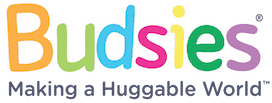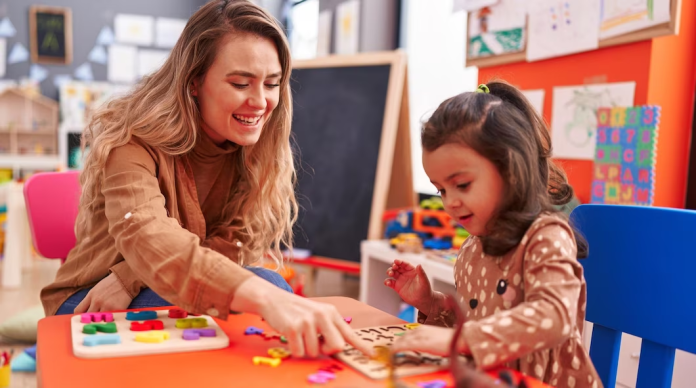Bilingualism is a cherished quality among children, and its value carries over well into a child’s adult life. A bilingual upbringing as a child strengthens a person’s cognitive development and enhances skills like problem-solving, critical thinking, and multitasking. It is also an avenue for cultural enrichment, particularly among families of different heritages. Plus, in a nation like Singapore that’s a melting pot of cultures and languages, knowing at least two languages as a child can come in handy for a happy and prosperous life.
Since its independence, Singapore has adopted a bilingual policy. Being proficient in English and an individual’s mother tongue—which is usually Mandarin, Malay, or Tamil—often prepares one for a successful life in the Lion City. Many schools, like Kinderland Singapore, take an active approach towards helping students become proficient in multiple languages in their early years. A prospective parent need only to see reviews of Kinderland SG and read parents’ insights on Kinderland education to learn more.
Bilingual learning doesn’t have to be limited to schools and classrooms, however. Parents can also support their children’s bilingual education through play, conversations, and more. Here are some relevant examples of what parents can do to further develop their children’s bilingual skills:
1) Integrate Language Learning into Daily Routines
First, parents can create a language-rich environment at home by seamlessly integrating both languages into everyday routines and activities. For instance, establishing a routine of reading bedtime stories in each language will expose children to a wider general vocabulary. It will also reinforce their understanding of language structure and syntax and help them compare the differences on their own.
Similarly, labelling household items in both languages will provide kids with visual cues that support their bilingual language learning. Children can make more connections between words and objects in their environment through this practice.
2) Practise the “One Language, One Person” Method
Another effective strategy for promoting bilingualism in young children is the “one language, one person” approach. It involves having one individual communicate exclusively in one language with the child.
For example, one parent may consistently speak in English while the other speaks in Mandarin. This provides children with clear linguistic boundaries and opportunities to develop proficiency in both languages.
3) Engage in Play-Based Learning Activities
Play is a natural and effective way for young children to learn and practise their language skills. Incorporating play-based activities that support bilingual learning enables parents to create engaging and interactive learning experiences for their children.
Some ideas include role-playing with bilingual dolls or toys. This allows children to practise language in context and develop their communication skills. Other games that support bilingual learning are “I Spy” and matching games. These will help children expand their vocabulary and reinforce language concepts in a fun and playful manner. Lastly, art projects with bilingual instructions and materials should also encourage creativity and language exploration.
4) Utilise Bilingual Resources
These days, parents have access to a plethora of bilingual resources designed to support language learning in young children. They can find bilingual books, apps, and websites that offer interactive and engaging ways for children to practise vocabulary, comprehension, and language skills.
Parents can also explore age-appropriate bilingual TV shows or videos with their children and consume them together. These will expose children to authentic language use and cultural contexts, which will enforce their mastery of both languages as they learn them.
5) Cater to Your Children’s Interests
Yet another way that parents can supplement their children’s bilingual education is by catering to their interests. If children are sufficiently engaged and motivated to learn, they are more likely to actively participate in language learning and retain what they have learned.
For example, if a child loves animals, parents can take them to the zoo and use both languages to describe the animals they see, their behaviours, and their habitats. Additionally, parents can read bilingual books about animals and watch documentaries in both languages.
If a child enjoys cooking or baking, parents can involve them in the kitchen and provide instructions in both languages while preparing meals or snacks together. This exposes children to new vocabularies related to food and cooking and reinforces their language skills practically and enjoyably.
6) Explore Language Learning Through Travel
Travelling to destinations where both languages are spoken offers unique opportunities for immersive language experiences, not only for young kids but for the entire family. Fortunately, there are many family-friendly destinations in Singapore and in nearby Asian and ASEAN countries that will provide rich cultural experiences and opportunities for children.
There, they can also practise their language skills in authentic contexts by engaging in conversations with locals, participating in cultural activities, and visiting attractions with bilingual signage. On top of strengthening a child’s bilingual skills, this experience can also encourage their appreciation of different cultures outside theirs.
7) Find a Caregiver Who Is Fluent in a Certain Language
In addition to parents and teachers, other people can support a child’s bilingual learning. Interaction with a caregiver who speaks the language can significantly support children’s language development.
Whether it’s a nanny, babysitter, or family member, having a caregiver who can converse in one of the languages spoken provides children with consistent exposure to the language and reinforces their skills.
Parents can use multiple methods when supplementing their children’s bilingual education, but it requires commitment, consistency, and creativity all at the same time. A parent will need to consistently converse with their children using the languages they want to promote, and they should also make language learning more enjoyable by integrating it through play and other everyday activities.
Through efforts like these, however, parents can empower young learners to thrive in the multilingual nation of Singapore and around the world. If you’re a parent whose children are in the process of learning two languages (or more), use the tips listed above to strengthen their bilingual education.



